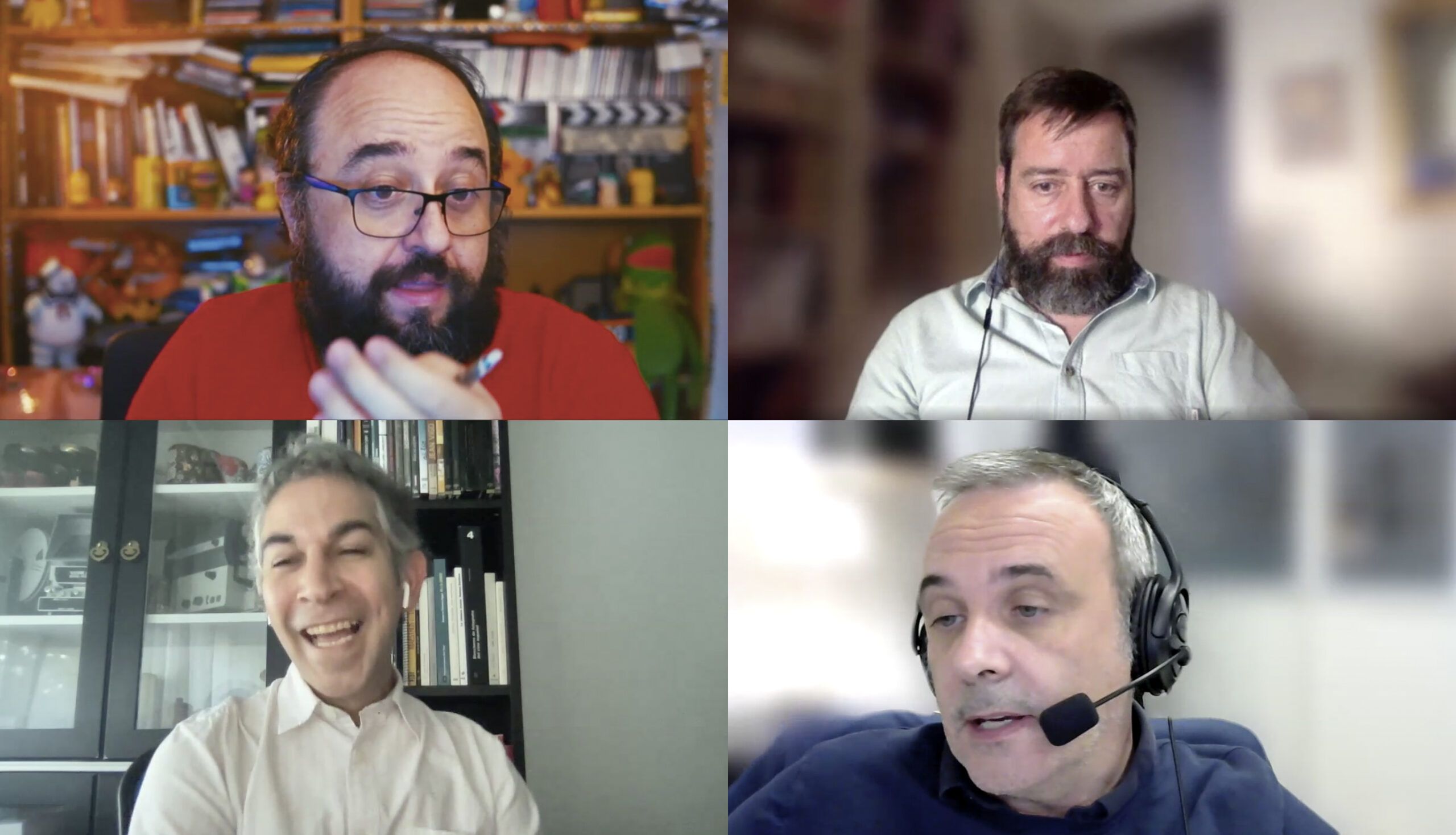UHD Spain hosts cinematographers and colourists at a virtual event to discuss the impact of HDR on lighting and filming

- The aim of the second meeting hosted by the UHD Spain association was to share experiences with film industry professionals about the impact of the new Ultra High Definition formats.
- The virtual meeting was restricted to UHD Spain, AEC members and media.
UHD Spain association, in collaboration with the AEC (Spanish Association of Directors of Photography), hosted yesterday afternoon a Meeting with Directors of Photography and Colourists. The primary purpose of this workshop was to share experiences with film industry professionals about the impact of the new Ultra High Definition formats, especially HDR and the new colour spaces, on lighting and capture in all types of shootings.
The private event, entitled “Impact of HDR in lighting and filming”, lasted an hour and a half in a virtual format and was attended by 50 professionals, including UHD Spain and AEC members and media. The virtual meeting was moderated by Emili Planas, CTO of Mediapro and member of the board of directors of UHD SPAIN, and featured as speakers were Juan Luis Cabellos, director of photography who works mainly in fiction, advertising and documentary series, active member of the AEC, as well as teacher at the ECAM University; Domènech Gibert, director of photography, active member of the AEC, teacher at the audiovisual school and trainer at TV3; Pol Torrents, also director of photography, nominated for the Gaudí Awards as director of photography for his work on the film Xtrems; and Luis Ochoa, senior colourist with more than 15 years of experience, designer of 4K HDR workflows, currently working at Drago Broadcast Services at Secuoya Group and expert in HDR monitors for Canon and Sony.
Some of the themes discussed during the meeting included questions such as whether HDR should be considered when shooting in advance, knowing that there will be an SDR version, or whether the fact that there are several versions in the broadcast should not affect the shooting. Along these lines, Domènech pointed out that “in the future everything will be HDR” and for this reason, we should always think about this new way of working”.
from a different perspective, Turrents expressed the importance of the cinematographer’s creative process and pointed out that “When you make an audiovisual production, you must start with the highest possible quality, and from there you must take into consideration where the viewers are going to see the film, without limiting your creative freedom”.
Differences in HDR capture between large and 2/3″ sensors, especially in close-ups, were also discussed, as well as considerations about make-up in the 2020 HDR colour space or illumination levels in large white areas when the nits level can now vary depending on the HDR value applied.
In reference to the type of lenses chosen and the final HDR image quality, Cabellos pointed out that “the higher the camera resolution, the softer the optics must be used. In fiction, we portray idealised characters in their role, but we don’t really picture the actual person, so you have to keep a certain distance. As professionals we have to use soft lenses and watch the whole process, the light, make-up, texture filters, to create an artistically beautiful and evocative image”.
“Technically we have the technical capacity to deliver hyper-realistic signals, but on the other hand, in order to have the ability to create a fictional story, this augmented reality is not convenient. One thing is the technical skill, and the other is the creative need to use it all,” Ochoa concluded in reference to this point.
Other topics discussed were about which monitor is taken as a reference or whether it is necessary to display in HDR and SDR simultaneously. In addition to discussing how it will look on the different HDR/SDR systems that can be used to broadcast audiovisual content on different types of televisions.
After more than an hour of interesting debate and as a final reflection, Ochoa appealed to the creative responsibility of professional content creators: “beyond the technical issue, we are in charge of seeing what HDR is going to bring to the new cinematography. We have to be like children, and once we’ve subdued the technical part, learn to have fun in this new stage and start creating new and impactful content. This is a historic moment of change and inflection, let’s enjoy it”.
The Meeting of Directors and Colourists about the impact of HDR in lighting and filming left the speakers eager to continue the conversation about the future of HDR in Spain and opened a new topic for discussion in reference to working standards.
This new initiative of the non-profit association UHD Spain involves different meetings between members of the association and professionals of the audiovisual industry and contributes to the commitment to promote Ultra High Definition in Spain, at all levels: both for consumers and professionals.
The 30 founding members of UHD Spain are: ADM Group, Ametic, Ateme, Atresmedia, Axión, Canon, Cellnex, Dolby, Drago/Secuoya, Egatel, Fecotel, Fenitel, Fraunhofer, Gsertel, Henneo, Hispasat, Hurí, Lavinia, Mediapro, Medina Media, RTVE, Rohde & Schwarz, Sapec, Tedial, Telecom Castilla La Mancha, Televés, Tredess, Universidad Politécnica de Madrid, Uteca and Vestel.
For more information, please contact us.